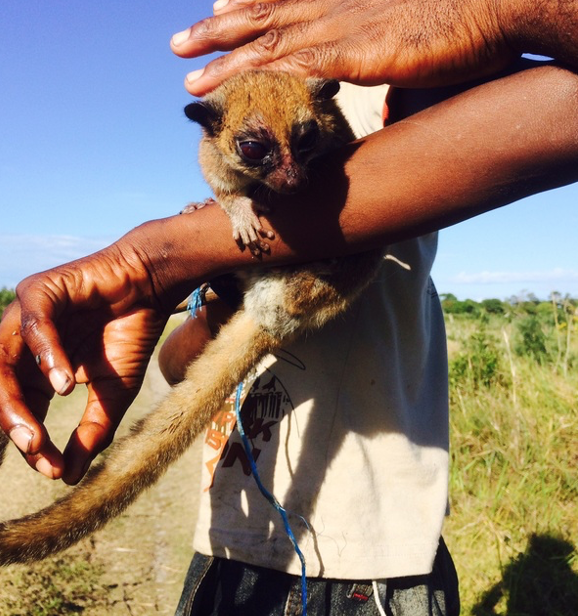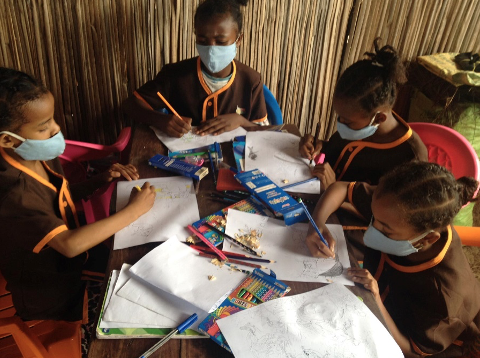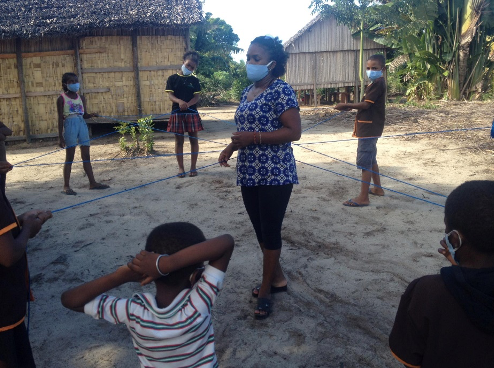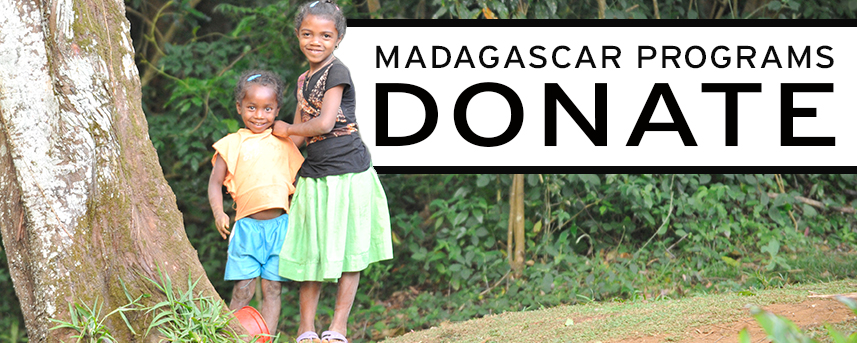The urban jungle
James Herrera, Program Coordinator, DLC SAVA Conservation
Lemurs are not only threatened in the remote rural countryside discussed in Part I of our Earth Day conservation blog. People in urban areas also capture or buy lemurs, sometimes for their own consumption or to keep as pets, or to sell to others as food or pets. Some hotels are patrons for both! Lemurs can be found tethered or free-ranging around hotels for tourists to see, or could also be found on the menu. When tourism resumes in Madagascar, it is important for tourists to choose their accommodations carefully and should avoid places that have lemurs or other exotic wildlife. There is a range of reasons that lemurs are in captivity, but it is illegal and threatens the endangered populations.

Lemurs are often captured to be kept as pets, for sale, and to be eaten. Lemurs are protected legally both nationally in Madagascar, and internationally. We are creating a new outreach campaign to raise awareness about the importance of lemurs and nature. Photo credit: Survey of Pet Lemurs project.
To counter this issue, the DLC-SAVA conservation program is leading a new lemur information campaign to spread the word about the importance of lemurs and natural environments. First, we are using a daily radio program to spread the message widely. We have an evening time-slot after the nightly news on a popular local radio station. Weekly content includes why lemurs should not be kept as pets, alternatives to lemur hunting, the importance of forests, climate change, and more. The DLC SAVA staff in Madagascar generously gave their phone numbers to take questions from the audience and have since been responding to intriguing inquiries from listeners. This exciting project arose via a new collaboration with Bethany Old, Masters student in the Duke International Policy program, and her colleague in Madagascar, Henristudio.
We have also developed a new lemur-focused lesson plan on the basics of their natural history, discouraging lemur hunting for food or pets, and promoting sustainable alternatives. Designed by Lanto Andrianandrasana and Evrard Benasoavina, this lesson plan starts with presentations using visual aids like informative posters we created that will be hung at the school and photos of lemurs to pass around and discuss. The plan also includes active learning exercises, like the web-of-life, and an educational coloring book on lemurs. The coloring book is a combination of efforts by Jessie Jordan at Ranomafana in southeast Madagascar, as well as Kathy West, Elison Pascal, and Cortni Borgerson at Masoala in the northeast. This lesson plan will be delivered at villages where we learn that people, especially children, are hunting lemurs, focusing on the areas near urban centers.

It’s no secret, children of all ages really enjoy coloring! Here, during a visit to Evrard’s School Garden, children color pictures of lemurs and other Madagascar wildlife, which were crafted by Jessie Jordan at Ranomafana. We have also gleaned from other colleagues around Madagascar and globally to develop our diverse and inclusive lesson plan.

To illustrate how everything is connected in ecosystems, including people, Teaching Assistant Marie Olys uses the web-of-life game. Each student represents a different part of the ecosystem, from the sun to the trees, and the animals, like lemurs. By passing the rope between the students that have interactions, like from the trees to the lemurs, children can see how things are connected. When some students drop their rope, like if the trees are taken away, they can see that the connection to the lemur is lost. This game gets kids actively learning about connectivity in nature.
These projects and more are a few new directions DLC and our collaborators are taking to conserve lemurs and their habitats in Madagascar. We could not achieve these goals without the support of our grants and donations that make these projects possible. We especially thank the Knox and Cooke families for their generous support that made these specific projects possible.


